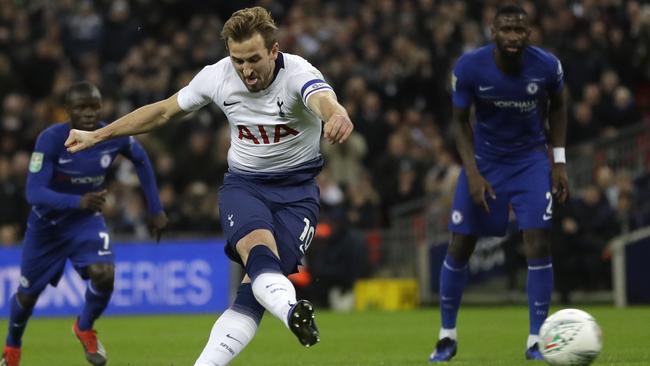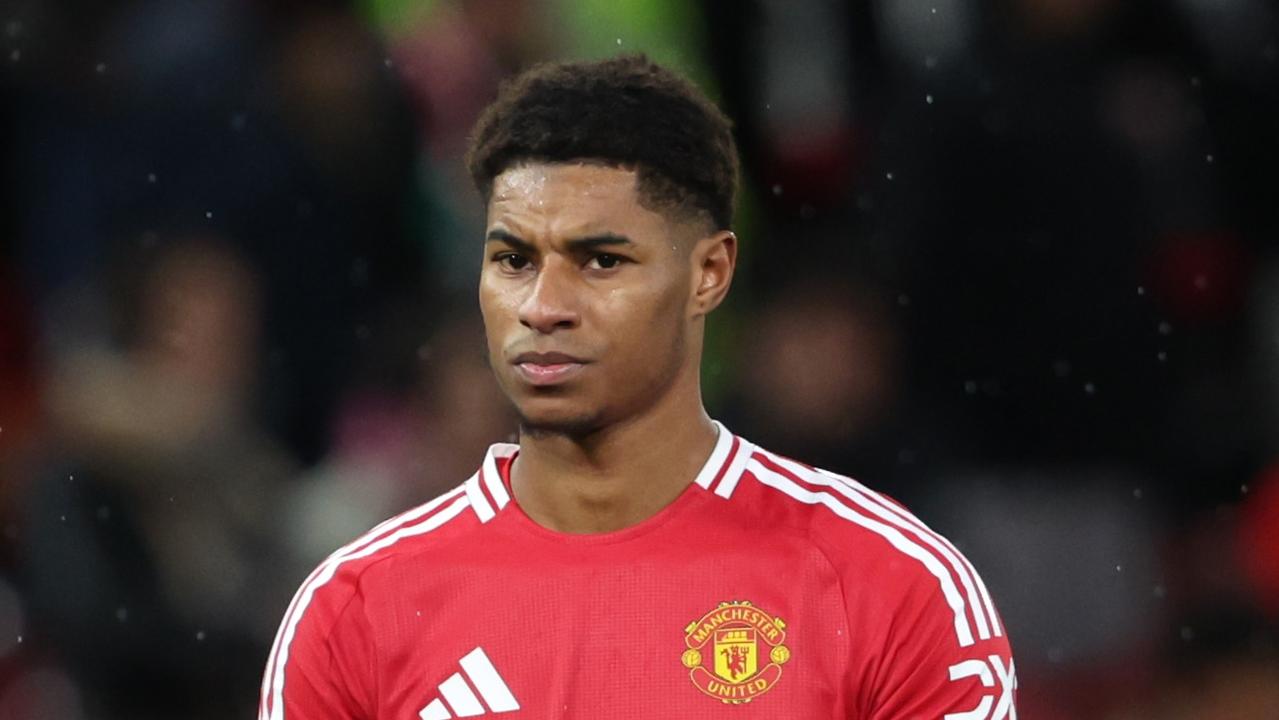Analytics show more goals scored from the box, but nothing beats a 30-yard piledriver
The English Premier League season is on course to be the highest-scoring in the top division in more than half a century.

This English Premier League season is on course to be the highest-scoring in the top division in more than half a century — and much of it is down to teams using data to inform their players’ decisions during games.
After 210 fixtures, the Premier League’s goals-per-game average is 2.85, the highest since 1967-68 (3.02) in what was then the First Division, despite the trend of teams shooting less and a decrease in the number of errors leading to goals.
At first glance that seems to make little sense. Surely to score more goals you need to create more attempts? Well, no. Managers, soaking up the information provided by their clubs’ data analysts, have realised that sometimes less means more, reaching the conclusion that it is more profitable to work your way into a better shooting position than it is to have a go from distance.
Shot-conversion rate and the percentage of attempts on target are at their highest since Opta began tracking such data in 2003-04, and although teams are shooting marginally more than last season’s lowest on record (25.1 attempts per game compared with 24.5), the wider trend is clear: quality trumps quantity.
As Omar Chaudhuri, head of football intelligence at 21st Club, a consultancy that advises clubs on making smarter decisions through use of advanced statistics, says: “This is one area of the sport where analytics has had a real, measurable impact.”
He cites the creation of the expected goals model, the metric that assesses the likelihood of every opportunity being converted — essentially the quality of chances created — as a turning point because it has led to teams becoming more selective about when and, more importantly, from where to shoot.
“One of the fallouts from these models has been to evidence how few shots outside the box are actually scored — around three in 100 attempts, compared to around 15 in 100 inside the box, excluding headers,” Chaudhuri says. “Of course, it’s harder to create chances inside the area, so teams have increasingly given up shooting opportunities from range in order to give themselves a better chance of creating a fewer number of high-quality chances in the box.”
It is beyond coincidental, then, that teams who take a higher proportion of their shots from outside the area are struggling near the bottom of the table. Fulham, for instance, has taken most attempts from 18 yards or more, 49 per cent, ahead of Southampton with 47 per cent. By comparison, only 32 per cent of Manchester City’s shots are from outside the box, a third of Tottenham Hotspur’s and 36 per cent of Liverpool’s.
When it comes to shots inside the six-yard box, the results are inverted. A tenth of Liverpool and City’s attempts have come from six yards or less, with Spurs on 11 per cent.
At the opposite end of the scale, 2 per cent of Huddersfield Town’s shots are from close range. It has had none from open play but three of its five efforts from six yards or less that originated from set pieces have become goals.
Burnley is a fascinating outlier because 16 per cent of its shots are from inside the six-yard box and a third from outside.
It is yet to score from outside the area and its ratio of goals scored from close range to goals scored outside the box is the highest in the division. That, however, is at least partially a result of them being the league’s most shot-shy team (9.2 per game) and also thriving from set pieces.
The continuing shift towards a patient build-up may also explain why this season there could be a record number of games where a team, in most instances one of the top six, have at least 65 per cent of possession. So far there have been 58 occasions in 2018-19 and, if that continues at the same pace, it will threaten last year’s record of 108. Eight seasons ago there were just 40 games in which teams finished with such a dominant share of possession.
Ultimately, it means that those desperate pleas for your central midfielder to shoot from 30 yards will be ignored even more.
Maurizio Sarri’s death-by-a-thousand-passes approach at Chelsea has had a pronounced impact. The number of passes attempted per game has been rising steadily since 2009-10 but the average of 920.2 so far in this campaign is a sharp increase. There is also a notable shift in pass selection. Crosses have been in steady decline and the decrease in 2018-19 has been dramatic, with the average of 24.4 almost half the amount it was when Opta started tracking pass types 16 seasons ago.
“The reduction in crosses probably contributes towards the trend in shooting distances/patterns,” Chaudhuri says. “It’s difficult to score from headers, so again teams are probably prioritising ball possession over putting it into the box.”
There is a temptation to apportion praise (or blame, depending on your viewpoint) to Pep Guardiola, with other teams seeking to imitate the City manager’s quest for dominance. Wednesday night’s 9-0 thrashing of Burton Albion in the Carabao Cup semi-final first leg was a stunning example: City had more than 70 per cent of the ball and converted 32 per cent of their attempts.
Chaudhuri notes that “the success of managers like Guardiola and (Liverpool’s Jurgen) Klopp has meant that clubs of all sizes have sought to emulate this exciting, attacking style of play”. He was once told by a club owner looking for a head coach that they wanted their team “to be a bit more like Dortmund, when Thomas Tuchel was the manager (from 2015-17), and Tottenham (Hotspur) under Mauricio Pochettino”.
The compulsion to pour forward may not all be a result of analytics, though.
As Klopp said in September after Liverpool’s absorbing 1-1 draw away to Chelsea in the Premier League: “I really think the most important job of football is entertaining the people because it’s only football. We don’t save lives, we are only good at football. If we do not entertain the people, why do we play it?”
Entertainment is, of course, subjective and celebrating a tap-in from six yards is rarely a match for the explosion of joy that greets a 30-yard piledriver. However, the implementation of data-driven strategies has indisputably led to more effective play, and an increase in goals should never be considered a bad thing.
The Times



To join the conversation, please log in. Don't have an account? Register
Join the conversation, you are commenting as Logout